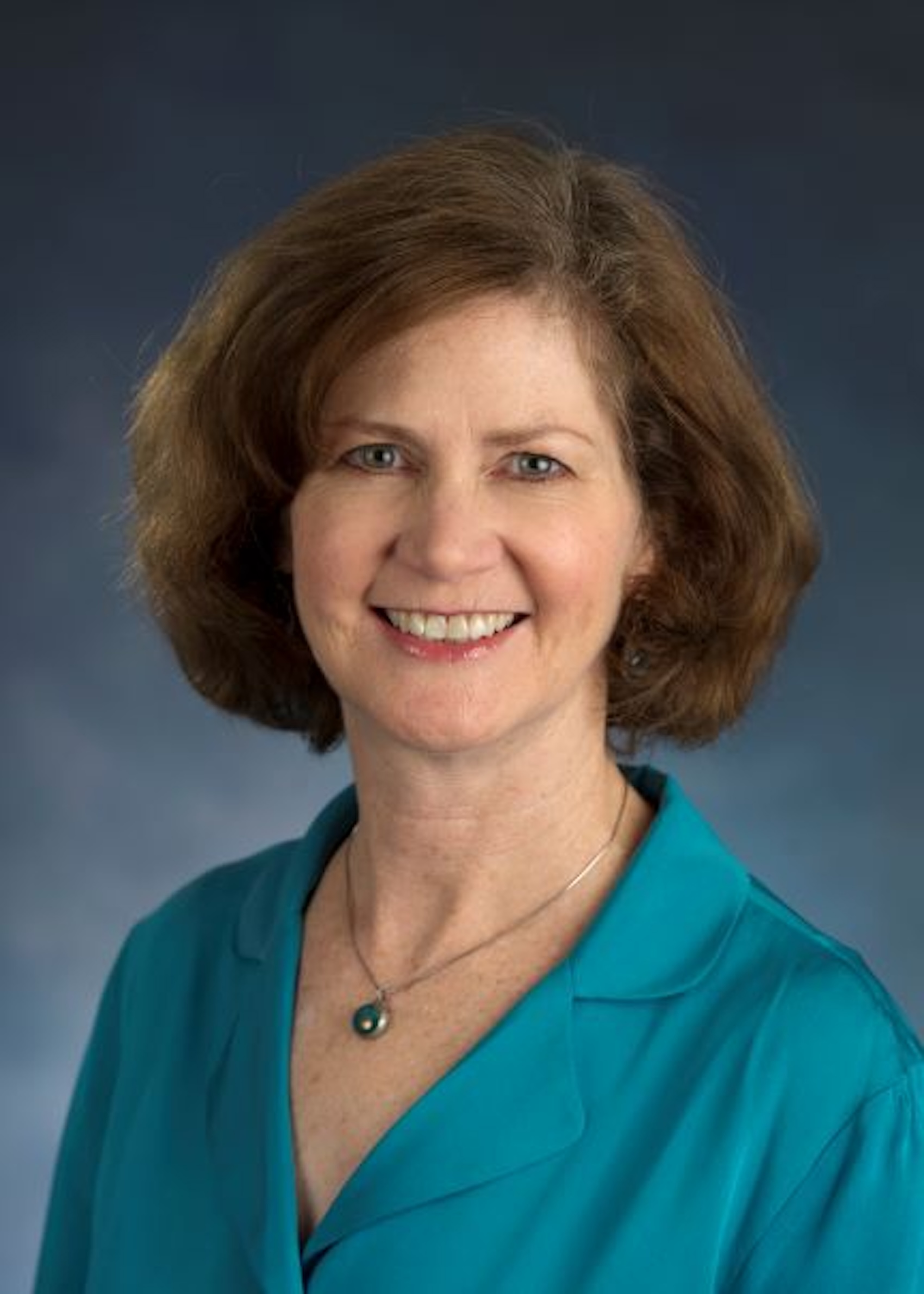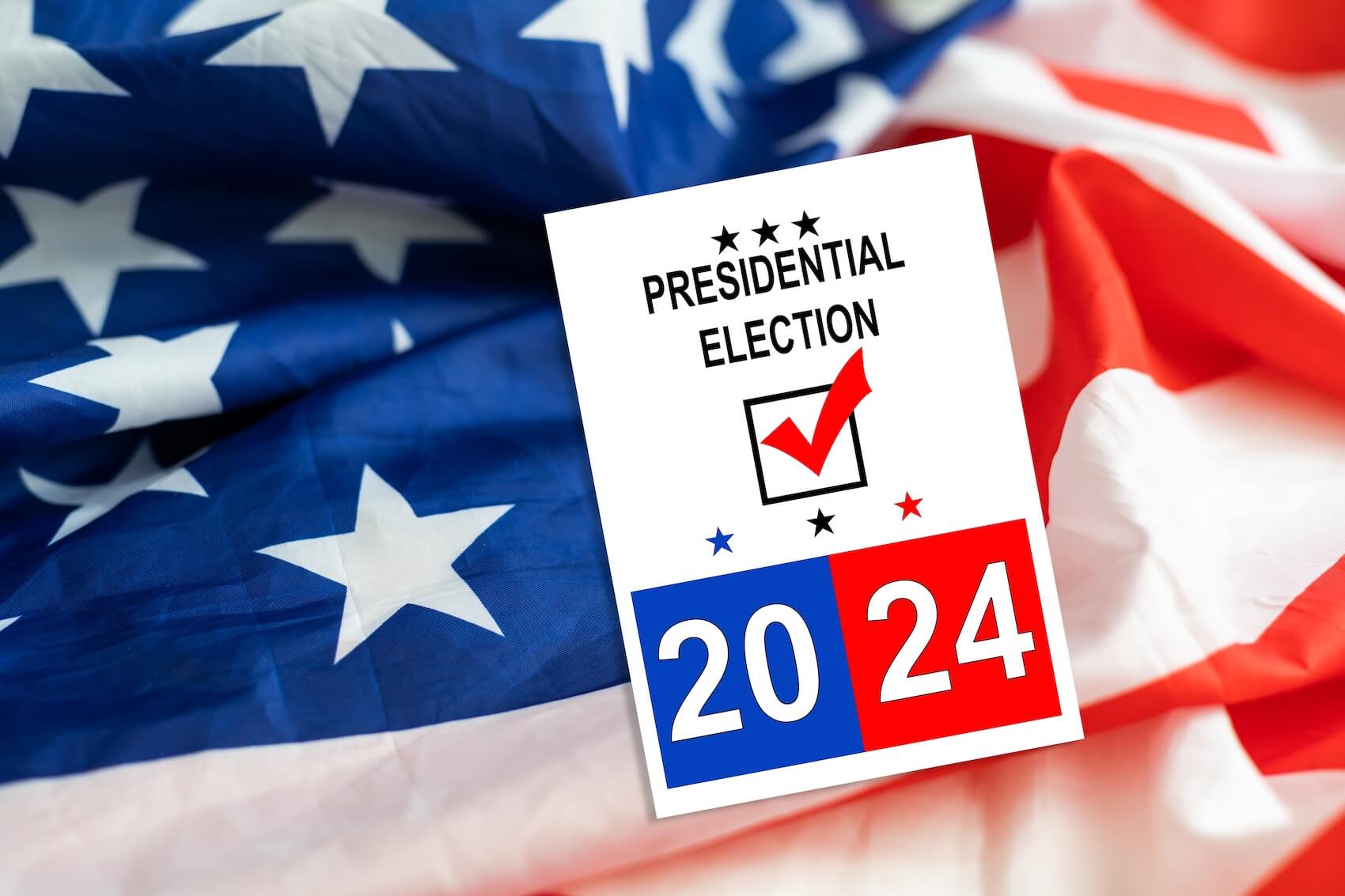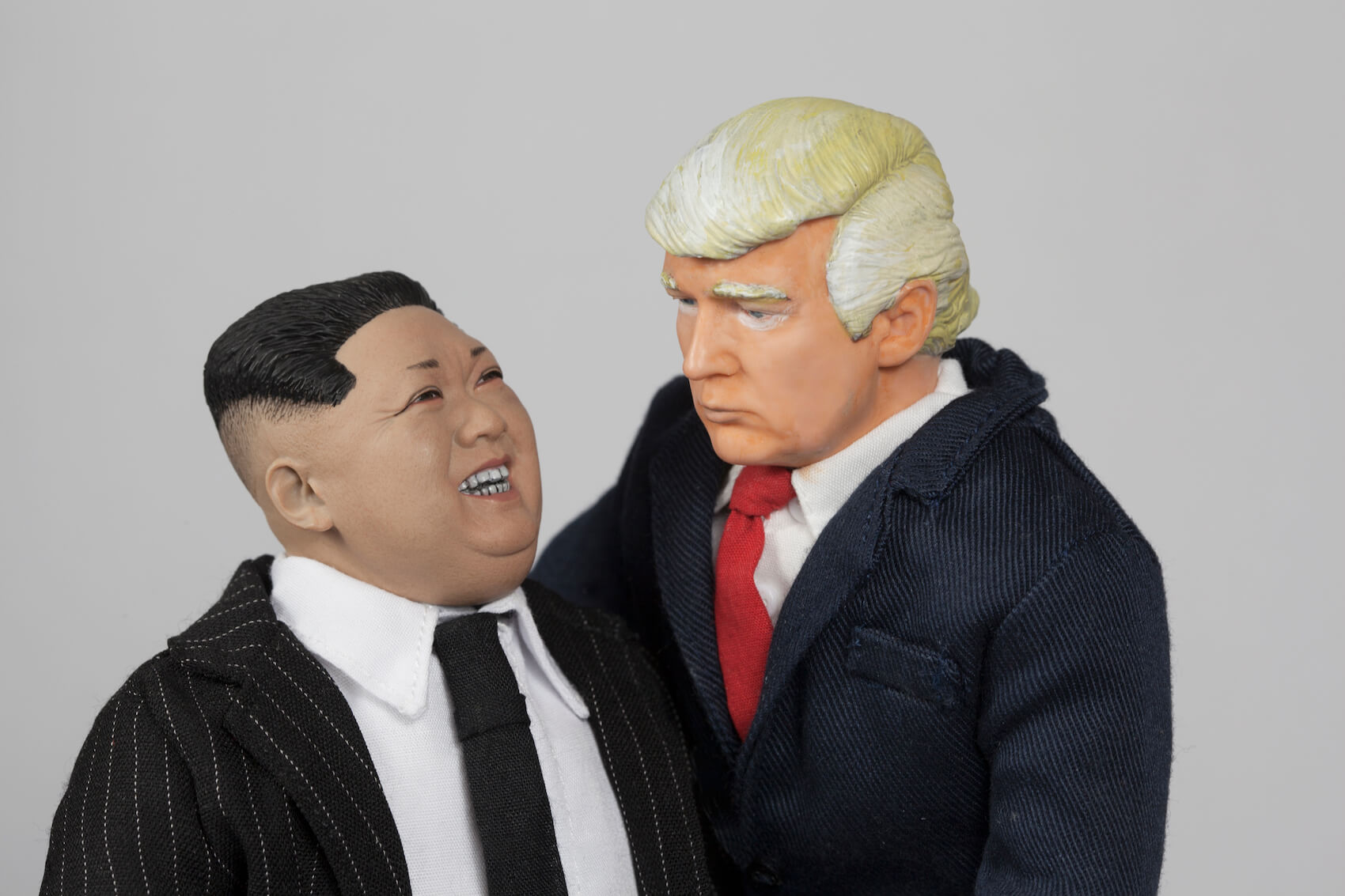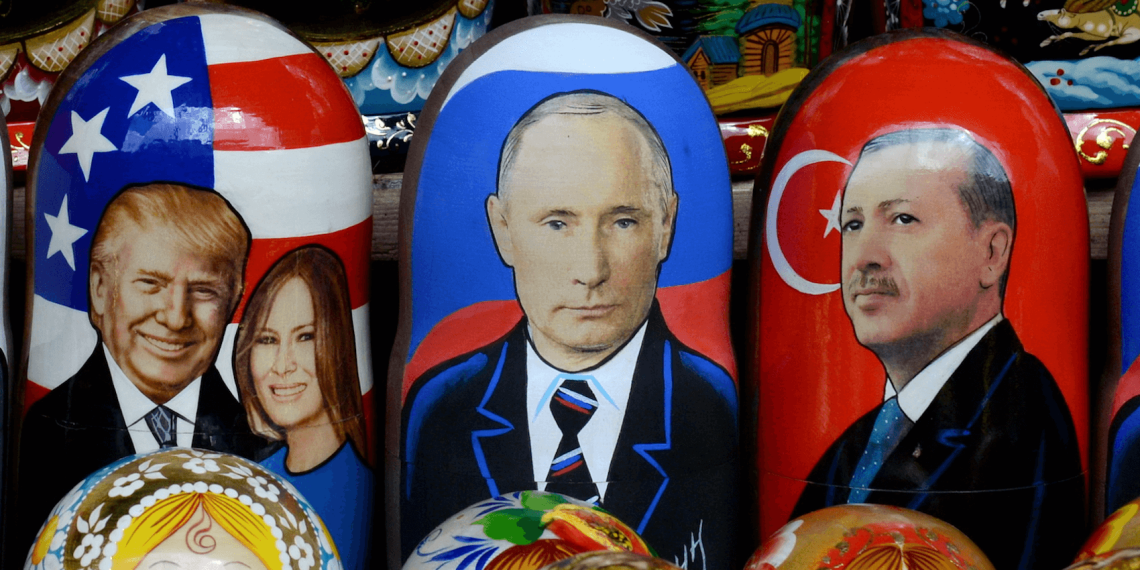In an interview with ECPS, Professor Jennifer McCoy warns that a Donald Trump victory in the November 5th US presidential elections could embolden populist movements and authoritarian regimes worldwide. Professor McCoy asserts that Trump is unlikely to prioritize reinforcing democracy in countries where leaders are consolidating power or undermining democratic norms. “Instead, his victory will empower authoritarian regimes, particularly in countries like Russia and China,” she explained, highlighting the potential global consequences of another Trump term.
Interview by Selcuk Gultasli
In an extensive interview with the European Center for Populism Studies (ECPS), Dr. Jennifer McCoy, Regent’s Professor of Political Science at Georgia State University, predicts that a Trump victory in the November 5th elections will embolden populist movements and authoritarian regimes worldwide. "I think it will embolden populist movements globally because Trump will likely support them," McCoy stated. She explained that Trump would not prioritize reinforcing democracy in countries where leaders are concentrating power or eroding democratic norms. "Instead, his victory will empower authoritarian regimes, particularly in countries like Russia and China," McCoy argued, highlighting Trump’s differing stances on global powers.
Professor McCoy, an expert on democratic decline and polarization, also delved into the broader effects of pernicious polarization on democracies. She explained how polarization, especially the extreme form she terms as “pernicious,” divides societies into hostile camps that undermine democratic institutions. “Pernicious polarization involves a perception of threat and a zero-sum mentality, which leads people to cut off communication with those on the other side,” McCoy said. ‘‘This kind of division complicates governance, reduces the capacity for compromise, and fosters deep social and political rifts.’’
Drawing from her research, McCoy emphasized that this destructive form of polarization often leads to a weakening of democratic systems. Historically, the resolution of such polarization has required significant systemic upheavals, such as wars, colonial transitions or authoritarian regime changes. However, McCoy warned that relying on such extreme disruptions today would be detrimental. Instead, she advocates for addressing polarization by restoring the ability of democracies to govern effectively without resorting to such drastic measures.
When asked about the rise of far-right parties in Europe and advanced democracies, Professor McCoy pointed to economic dislocation and political convergence around market-based policies as significant factors. “Globalization was rising and many people felt left behind,” Professor McCoy noted, explaining that traditional parties’ failure to address these concerns opened the door for populist outsiders. These leaders, often using divisive rhetoric, scapegoat marginalized groups—especially immigrants—offering simplistic answers to complex socio-economic issues.
As Professor McCoy sees it, the challenge for democracies lies not just in addressing the root causes of polarization but in mitigating its effects before democratic institutions are irreparably damaged. In her analysis, both electoral reforms and changes in political strategy are essential to restore stability in deeply divided societies.

Here is the transcription of the interview with Professor Jennifer McCoy with some edits.
Negative Emotions Are Generally More Powerful Than Positive Ones
Professor McCoy, thank you very much for joining our interview series. Let me start with the first question. In your study, you found that negative emotions, such as anger and resentment, can increase populist attitudes. Could you elaborate on the specific emotional triggers that are most effective in activating populist sentiments?
Professor Jennifer McCoy: Negative emotions are generally more powerful than positive emotions, which makes them harder to counteract. The negative emotions that populists often tap into are related to feelings of unfairness and injustice. They highlight situations that seem unjust or unequal, which can generate resentment and anger—sometimes even anxiety or fear. But anger and resentment, in particular, drive people to seek someone to blame. Populists are very skilled at identifying scapegoats or "enemies," which provides their supporters with a sense of control.
While populists can also evoke enthusiasm, especially for themselves as leaders, it’s the distrust of others that becomes particularly dangerous. Populists encourage trust in themselves, but simultaneously foster deep distrust in those outside their group.
In your research on democratic decline, what specific factors have you identified as the most critical in driving polarization in the United States and other democracies? What is the relationship between polarization and democratic decline? How are these two phenomena interrelated?
Professor Jennifer McCoy: Well, we’ve found that increases in what we call extreme or "pernicious polarization"—which occurs when societies split into two mutually distrustful and antagonistic camps—are particularly significant. In this context, politics is seen as a zero-sum game, where one side’s gain is perceived as the other side’s loss. When people feel threatened by the prospect of the opposing side being in power, they may support politicians or actions that sacrifice democratic principles in order to gain or maintain control.
We’ve observed a strong correlation between rising political polarization at extreme levels and declining scores in liberal democracy. This correlation may reflect a causal relationship, where heightened perceptions of mutual existential threat from the other side lead people to become more willing to undermine democracy in order to protect their interests.
Populist Leaders Deliberately Use Polarization to Divide Society
What are the root causes of polarization in the contemporary world and how can we measure and compare its severity across different cases?
Professor Jennifer McCoy: The kind of polarization I’m referring to is difficult to measure. Traditionally, scholars have used terms like ideological polarization, which is measured through surveys that assess individuals’ positions on issues or their placement on a left-right or liberal-conservative scale. Another growing area in the literature is affective polarization, which measures people’s feelings—specifically how much they dislike other political parties, leaders or supporters of opposing parties.
However, what I find crucial is the perception of threat. It’s not just about dislike but about people feeling threatened by another political camp. This might not even be tied to a specific party—it could be centered around a leader. For example, in Venezuela, there was deep devotion to Hugo Chavez, a populist leader and strong opposition to him without necessarily supporting an alternative party. We see this in other countries, like Hungary with Viktor Orbán or Turkey with Recep Tayyip Erdoğan. So, polarization can exist even without clear divisions between two political parties.
At the national, systemic level, polarization is a process of dividing society. A single measure to capture this is almost impossible to develop. However, we’ve used tools like the Varieties of Democracy (V-Dem) database, which relies on expert surveys to assess the extent to which societies are divided into hostile camps. This gets close to what we’re discussing. Additionally, we can look at perceptions of threat in surveys among voters and analyze the rhetoric used by political leaders.
Leaders play a critical role in polarization. Polarizing, populist leaders often identify enemies and use divisive “us vs. them” rhetoric. When we see leaders discrediting their opponents—calling them traitors, disloyal to the country or questioning their citizenship—that’s a clear sign of polarization and a deliberate strategy used to divide.
You often refer to "pernicious polarization" as a threat to democracy and its role in fostering autocratization. How do you define "pernicious polarization" and how does it differ from regular political polarization in a democratic society? What makes it particularly dangerous for democratic systems?
Professor Jennifer McCoy: Our definition of political polarization refers to the process of simplifying politics to the point where society becomes divided into two mutually distrustful and antagonistic camps—an "us versus them" dynamic. This leads to a perception of politics as a zero-sum game, where one side’s gain is perceived as the other side’s loss and both sides feel an existential threat from the other.
In political science, the term polarization is often used to describe the differentiation of political parties. For example, when parties distinguish themselves by saying, "We are different from the others—vote for us because we’re better at this," they are merely differentiating their platforms. As these differences grow, it can be considered polarization. In this sense, some level of polarization is beneficial because it provides voters with cues about where parties and leaders stand, which helps them make informed choices.
However, when this differentiation becomes more toxic, we enter the realm of pernicious polarization, which is harmful to democracy. Our definition goes beyond affective polarization—which is focused on feelings of like and dislike—because it’s not just about emotions. Pernicious polarization involves a perception of threat and a zero-sum mentality, which leads people to cut off communication with those on the other side. It results in a bifurcated society, where political identities become intertwined with social relationships and people retreat into their own silos, unable or unwilling to engage with opposing views.
Solutions That Avoid Systemic Interruptions Are Needed

You argue that "we have compelling historical reasons to worry about the pernicious consequences of polarization for democracy." Could you elaborate on these historical examples and their relevance?
Professor Jennifer McCoy: We’ve seen societies divide throughout history. If we look at episodes of pernicious polarization dating back to the 1900s—more than a century ago—many of these arise in certain contexts. For example, during the interwar period in Europe, we saw the extreme "us versus them" strategies employed by fascist leaders. We’ve also seen polarization increase during struggles for independence in the colonial world, both before and after post-colonialism, as countries fought for self-determination. In some cases, these conflicts escalated into civil war.
What we’ve observed is that, historically, episodes of pernicious polarization have often been resolved through major systemic disruptions. These include coming out of a war and reaching a peace agreement, transitioning from colonialism to post-colonial independence or moving from authoritarianism to democracy. These types of solutions—war, independence struggles or regime changes—are drastic and disruptive.
However, today we face a different challenge. We don’t want to rely on such extreme solutions to resolve polarization. The issue now is that existing democracies are becoming deeply divided, which threatens their ability to govern effectively. When polarization hampers a democracy’s capacity to compromise, negotiate and solve collective problems—things that democratic politics should enable—we need to find solutions that don’t involve the systemic interruptions we’ve seen in the past. We need to address polarization within the framework of maintaining and strengthening democracy.
Polarization Eliminates the Cross-Cutting Ties Essential to Democracies
Once the harmful form of polarization takes root, how can it be avoided or reversed? What strategies or institutional reforms do you believe are most effective in mitigating polarization and restoring democratic stability in deeply divided societies?
Professor Jennifer McCoy: This is a really difficult question to answer, and I’m working on research with Murat Somer from Turkey on this. We’re currently writing a book, trying to look at historical examples. What have countries that have been democracies done to overcome this? Unfortunately, we do not have many good examples of established democracies from the past that have reached these levels of polarization and successfully come out of it in peaceful ways. So, we don’t have many strong examples, but we do have some instances.
We’ve identified several key principles that need to be addressed. First, think of polarization as the division of society that simplifies politics into two opposing camps, an "us versus them" mentality. This eliminates the cross-cutting ties that are so important in democracies. In healthy democracies, people have different identities and can relate to others based on those diverse identities and interests, despite differing political views. With extreme polarization, however, people’s social identities and their patterns of interaction begin to align with their political identities. As a result, they lose those cross-cutting ties with people from other political camps.
We need to restore these cross-cutting ties and create spaces for people to come together. A lot of work has been done on this in terms of bridging divides, bringing people together to work on projects at the local level—one effective way to foster connection. In neighborhoods, for example, people working together on local issues allows them to know one another first through social relationships. They begin to see their shared humanity and common concerns, such as the safety and well-being of their children. Once that foundation is established, they can start discussing politics and political solutions.
A second approach involves moving away from zero-sum perceptions toward positive, win-win perceptions of politics and economic issues. This shift requires better information and changes in how the media reports on issues. In the United States, for example, media often focuses on the "horse race" during elections, presenting the competition between candidates without providing in-depth analysis of policy solutions or the real impact on people’s lives. One candidate may even threaten democracy by refusing to accept election results, but if the media only focuses on the competition, people may lose sight of the broader consequences. Highlighting positive news, accomplishments and win-win solutions can help people see that not everything is a zero-sum game.
The third point I want to mention is changing incentives—particularly for politicians, but also for voters—to engage in less polarizing strategies. Politicians know that appealing to anger, resentment, and unfairness with divisive, blame-oriented rhetoric can be a highly effective electoral strategy. However, they also need to understand that appealing to positive emotions, offering a vision of hope and fostering enthusiasm can also be a winning strategy. We’ve seen examples of this recently in Turkey during local elections, where politicians successfully used more positive appeals.
Changing incentives for politicians may also involve electoral reforms. In countries like the United States, the UK, Canada and India—former British colonies with winner-takes-all electoral systems—single-member districts create disproportionate representation for larger parties. This system reinforces the two-party model, making it difficult for third or fourth parties to break through and have a voice. By contrast, countries in Europe and Latin America that use proportional representation allow parties to gain representation based on their share of votes, which encourages coalition-building and a broader range of voices.
In winner-takes-all systems, politicians are incentivized to turn out their base rather than broadening their appeal to a larger group. They don’t need to form coalitions, so they rely on polarizing appeals to mobilize their supporters. Reforming electoral systems to encourage broader representation could help reduce polarization by incentivizing politicians to appeal to a wider range of people, rather than simply energizing their base with negative rhetoric.
Transformative Repolarization Can Help Strengthen Democracy
In an article, you mention that polarization can sometimes contribute to democratic deepening under certain conditions. Can you explain the mechanisms by which polarization might strengthen democracy, and what factors differentiate constructive polarization from destructive polarization?
Professor Jennifer McCoy: There are two ways I want to highlight. One is simply building political party identity, which requires differentiation. Here, I’m referring to polarization as the differentiation of political parties, not the extreme or pernicious form we’ve been discussing. For instance, Adrienne LeBas focuses on cases in Africa where differentiation helps to build and mobilize citizens in new parties that can challenge long-dominant parties. This type of polarization can be positive because it helps to mobilize people.
In our research, Murat Somer and I argue for what we call constructive polarization or transformative repolarization. This occurs when a country is already perniciously polarized around a divisive issue that a polarizing leader has emphasized, such as immigration or "the people versus the elites." In these cases, challenging leaders and parties can attempt to shift the axis of polarization. There are many possible axes of polarization—religious versus secular, urban versus rural or nationalism versus cosmopolitanism (e.g., the EU versus national identity in Hungary).
One important axis we’ve observed is democracy versus authoritarianism. In a country experiencing democratic backsliding or sliding into autocracy, identifying a new dividing line—centered on the values of democracy, integrity and anti-corruption—can be a constructive form of polarization. This approach works as long as the focus remains on values and ideas, rather than demonizing individuals or voters who may support an authoritarian leader. By focusing on democratic principles, this can serve to correct democratic deficits and address social injustices.
For example, during the US civil rights movement, the focus was on correcting racial injustice, promoting equality and inclusion and erasing discrimination and subordination of particular races. This kind of transformative repolarization can help strengthen democracy by addressing fundamental injustices.
How do you explain the rise of far-right parties in Europe, particularly in some of the most developed democracies? Why do citizens in seemingly advanced political systems feel powerless and turn to support far-right populist parties?
Professor Jennifer McCoy: I think there was a convergence of political parties in the 1990s and early 2000s toward market-based economic solutions. Globalization was rising and many people felt left behind. At the same time, there was a sense that political parties weren’t responding to the needs of ordinary citizens. In Europe, in particular, Social Democratic parties started to lose their anchoring in society, especially through labor unions. In the United States, labor unions have been decimated, only now showing early signs of recovery.
Without strong social anchors and a clear programmatic vision, particularly on the left, people began to feel that the major parties were indistinguishable and unresponsive to their needs—especially those who felt excluded from the benefits of globalization. In addition to this, we’ve seen other global systemic changes, such as technological advances, which have led to automation and job losses. Information technology has also changed how people receive their news and political messages.
Moreover, we’ve seen the impacts of climate change, which has influenced the movement of people. Wars and civil conflicts have also contributed to significant migration flows, including immigrants and refugees. All these factors converged, especially following the global financial crisis of 2008–2010. Traditional political systems struggled to respond effectively, leaving a gap for outsider populist leaders and far-right parties to step in.
Far-right parties often exploit these issues by using divisive rhetoric, blaming particular groups for society’s problems and identifying enemies that need to be eliminated. In Europe, this rhetoric is usually centered around anti-immigrant sentiments, though it can also target other groups.
US Electoral System Creates a Disproportionate Representation
What role did polarization play in Donald Trump’s victory in 2016? Could you elaborate on how polarization contributed to Trump’s appeal among American voters?
Professor Jennifer McCoy: Many of the same factors were at play in the US as in other parts of the world. There was a strong convergence between the Democratic and Republican parties around globalization measures, but there wasn’t enough compensation for workers and industries that were negatively impacted by these changes in the 1990s and early 2000s.
However, polarization in the US has been rising for several decades, stemming from long-standing, unresolved debates in American history. One of the major divides is racial—the ongoing struggle over inclusive and equal citizenship, which dates back to the founding of the nation when slavery was legal. At that time, enslaved African peoples were not considered fully human, women were second-class citizens and Indigenous Native Americans were not included. These unresolved issues have persisted as the US has attempted to address injustices and become more inclusive over the past 200 years.
The country has gone through several tumultuous cycles, including the Civil War in the 1860s and, more recently, the Civil Rights Movement in the 1960s and the Women’s Movement in the 1970s. These movements have been disruptive but necessary for democratic progress. Each time democracy moves forward to include new or previously excluded groups—such as LGBTQ individuals—there is often backlash. In the US, this backlash has grown since the Civil Rights Movement, as some dominant white groups, particularly men, have felt that their identities and positions as community leaders and economic providers were being threatened.
Additionally, we’ve seen changes in media and communication technology. Cable news, talk radio and the proliferation of social media have created a vast array of information sources that people can turn to. Since the 1990s, the Republican Party has employed a polarizing, confrontational political strategy. All of these factors contributed to the rise of Donald Trump in 2016.
Trump was able to sense these underlying grievances—many still reeling from the 2008 financial crisis—and the anxieties triggered by demands for new rights and greater inclusion, which are essential for democracy. His instinctive use of bullying and blame tactics allowed him to galvanize support by identifying enemies and railing against political correctness. Many people, feeling tired of having to be cautious about their words and how they identified others, were drawn to his message.
Trump presented himself as an outsider and a successful businessman, someone who could "save" the economy and democracy. He also employed a strong anti-immigrant message. It’s important to note, however, that Trump did not win the majority of the popular vote—Hillary Clinton did. The US has a unique system with an Electoral College, an indirect presidential election process and a Senate that creates a disproportionate system of representation. Rural areas, which tend to lean more Republican due to polarization and political sorting, hold more weight in this system, which also contributed to Trump’s victory.
Trump’s Victory Will Empower Authoritarian Regimes

How do you think American democracy and its institutions will respond to another Trump administration if he wins the election on November 5? Some scholars and institutions argue that American democracy might not survive another Trump term—where do you stand on this debate?
Professor Jennifer McCoy: I am concerned and I fall on the more worried side of the debate. While I don’t think democracy will completely collapse, I do believe it could be significantly damaged and become extremely unstable.
One major concern is that, during his first term, Trump was unprepared. He didn’t expect to win and as a result, he didn’t have a team ready to support him or fully understand how to wield executive power. There were still institutional guardrails in place that could stop him at various points. For example, Democrats frequently resorted to lawsuits to challenge many of his autocratic tendencies and the courts were used extensively during his first term.
However, over those four years, Trump was able to make numerous judicial appointments, which have since politicized the courts to a significant degree. In the US, you can sometimes choose which court or district to bring a case to and certain courts are known for being more conservative than others. This, combined with the fact that Trump was able to appoint three Supreme Court justices by pushing the limits of constitutional legality, has weakened the judicial guardrails that were once stronger.
More importantly, both Trump and his supporters have had time to prepare. People looking to use his presidency for their own agendas have spent time developing legal strategies that could allow him to assert even more executive power than he already has. They’ve also focused on placing loyalists in key positions throughout the federal government and bureaucracy, which could further erode the civil service guardrails.
Additionally, the US is increasingly divided along state lines. There are more Republican-dominated states than Democratic ones and many states are fully controlled by one party. What used to be institutional safeguards are now weakening under these partisan divisions.
If Trump wins, the country will be even more divided. A significant portion of the population—around 30%—is deeply entrenched in their support for him, while another 30% is firmly aligned with the Democratic side. There is also a large group in the middle, around 40%, that remains unaffiliated but leans one way or the other. The concern is that those strong Trump supporters may react very negatively if he loses and surveys suggest that around 10% of the population supports the idea of political violence in response to an election loss. Trump himself is likely to claim the election was rigged if he loses.
On the other hand, if he wins, Democrats and those who oppose him will do everything they can to prevent further curtailment of rights. While I don’t foresee them resorting to violence, they will certainly push back against any attempts to undermine democratic institutions.
If Trump wins the elections on November the 5th, how do you think this victory will impact the populist movements worldwide?
Professor Jennifer McCoy: I think it will embolden populist movements globally because Trump will likely support them. He won’t push to reinforce democracy in areas where leaders may be concentrating power or eroding democratic norms. Instead, his victory will empower authoritarian regimes, particularly in countries like Russia and China. While Trump has maintained a strong anti-China stance, he’s shown a more favorable approach to Putin and Russia. So, overall, I believe a Trump victory will embolden these movements and regimes.


